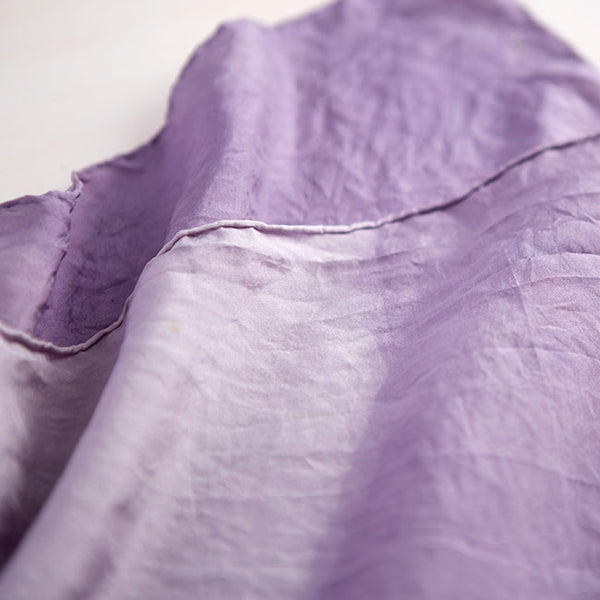Today, my first Creativebug video launches!
In this class, titled Natural Dyeing: How to Dye Silk and other Protein-based Fibers, I dye a silk scarf. This is an introductory class designed to show you the basic steps in dyeing with natural plant extracts. This video is a great accompaniment to my book, The Modern Natural Dyer. Just like all of my projects / dye recipes which I have published, the idea is to show you the basic steps, as a jumping off point, where you can make the exact same silk scarf as I have in the video, and with room for you to improvise and make your own variation. For those of you who have purchased the Northwoods Hat kit, the steps I teach in the Creativebug video using the silk scarf, are exactly the same for using yarn.
When thinking about how to get as many people possible natural dyeing, choosing what is known in the dyeing world as a blank is the most accessible. A blank is any "finished object" which is undyed - this could be a silk scarf, a cotton dress, linen placemats - anything where the sewing or knitting has already been completed. By using a blank, once the dyeing is complete, it is read to wear / use.

When faced with the decision of what size and shape to use of cloth to demonstrate natural dyeing. I most often choose a square shape. This shape reminds me of the iconic cotton bandana or Hermes silk scarf. Often times, instead of wearing my naturally dyed silk-scarves around my neck, I tie one in a loop around the strap of my purse, for a bit of softness. If it is cold, I can tie it around my neck. Or if I start a knitting project, and I am on the go, I can use it as a furoshiki, and wrap my yarn, needles, and in-progress project, to protect it while carrying it in my bag. And when someone comments on the scarf I am wearing, or I think they might like it, I give it to them, as I find them so simple, useful, and fun to create.

To make your own naturally dyed scarf, you will need a silk scarf.
You will need the following tools:
+ scale
+ spoon or small whisk
+ measuring spoons
+ liquid measuring cup
+ tongs
+ 3-5 quart stainless steel pot with lid
+ timer
+ thermometer
+ rubber gloves
+ bucket
+ dye journal (recommended)
+ apron (recommended)
+ access to hot water and stovetop (kitchen works well)
You will need the following dye ingredients:
+ liquid washing detergent (I use Ecover)
+ aluminum potassium sulfate
+ natural dyeing extract (I use logwood in my video).

We have created a kit for this class, to help you get started. In this kit, there are three silk scarves. There is all of the scour and mordant needed for three scarves. There is enough dye to create a vibrant, saturated color, though by all means, you could back off on the dye, and create a more-muted color. 5 dyes are included: madder (orange-red), weld (yellow), quebracho red (coral pink), cutch (caramel), and logwood (purple).
Here are some ideas for variations you could make to the scarves during the dyeing process:
+ choose a different dye to make a different color
+ use a different size silk scarf, a larger square, or a rectangle shape.
+ combine dyes to make even more colors.
+ add the scarf to the pot in 20 minute increments, to create a scarf with an ombre pattern.
+ tie the scarf into a knot and add it to the dyepot. This way, the dye can't reach the tied parts. Once you are done dyeing, untie the knot, and there will be a pattern.
-----------------------------------------------------
I am so excited to share my new video with you! I hope you will jump over to Creativebug and watch it.
A note to those of you who have purchased The Modern Natural Dyer Work-Along Phase 1 Kit - we are in the process of shipping them to you. We are going down the list, shipping them in order of orders placed.
In case you missed it, yesterday, I released a new cowl pattern.
In the next few days, I will begin to post about the second project in The Modern Natural Dyer Work-Along, Sock Hop, where we will hone in on natural dyeing plant-based fibers.
